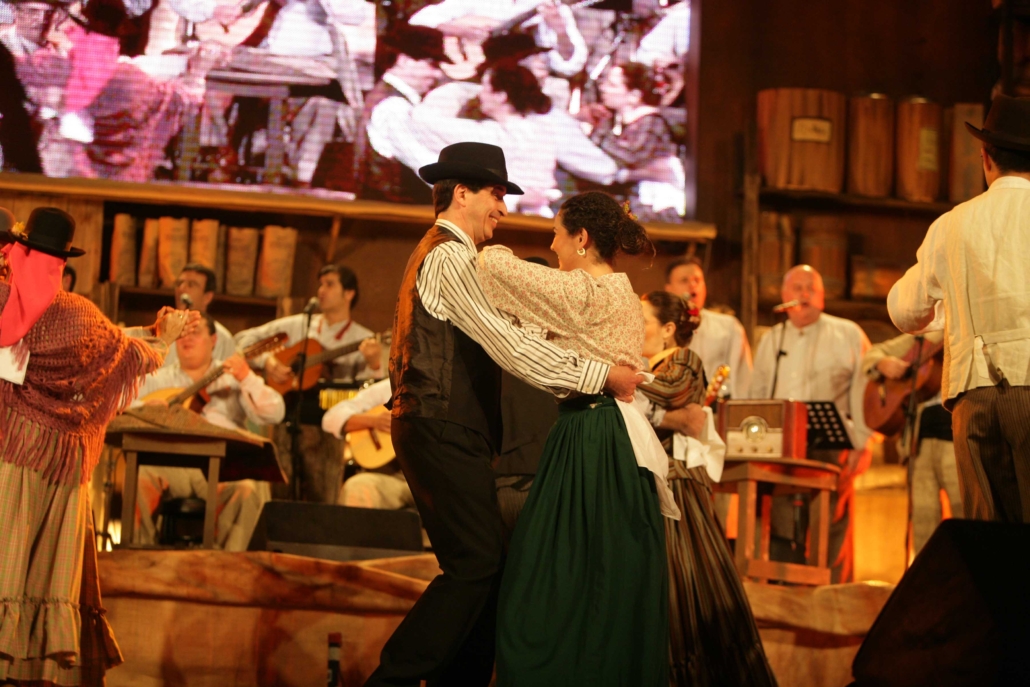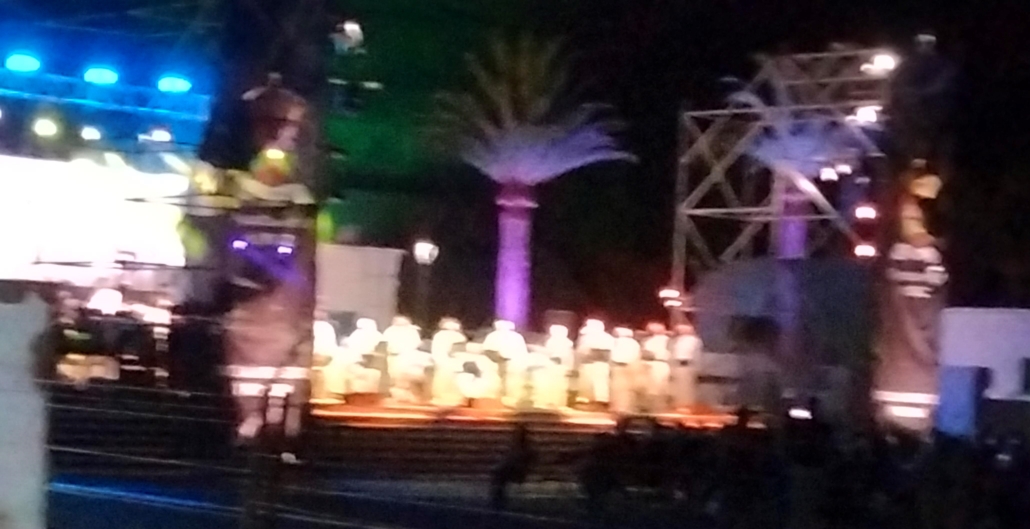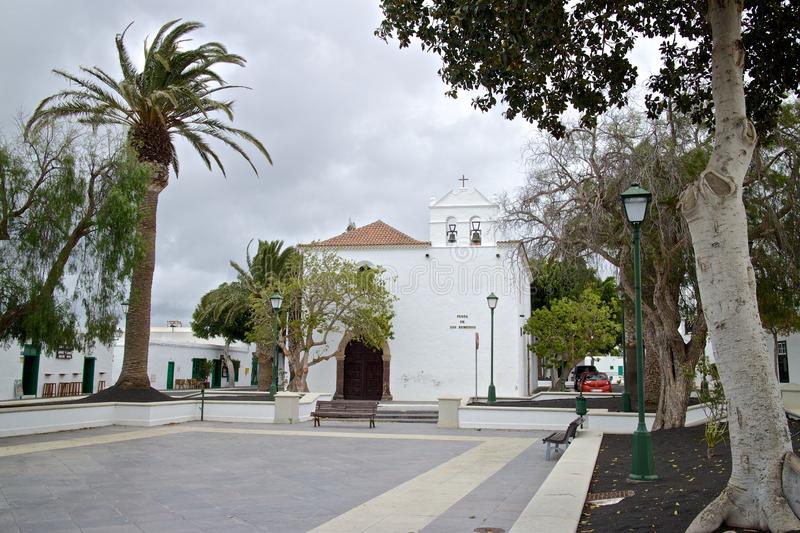CLASSIFICATION; SIMPLY PERFECT Los Gofiones
CLASSIFICATION; SIMPLY PERFECT
Los Gofiones, ´neath a wafer-thin moon
by Norman Warwick. after reading Victor Batista
We talk about traditional, folkloric and popular music… and make a mess. So says Victor Batista in an on-line article. He is a professional musicna who released an album called Coracao Haminador in 2019. So he is certainly qualified to shed a little light on this matter by examining similarities and difference between various classification,

´Traditional or folk music here on Lanzarote´, he says ´is originally of oral transmission, although today it is part of the formative content in conservatories, schools and academies. Traditional or folk music is anonymous, and in any case is part of the intellectual property of a social collective, a people, or a historical nationality. In this sense, traditional or folk music is integrated into the heritage of the place where it is generated, remained and developed, constituting a sign of identity of those who carry it. This means that many of the towns on the island have their own songs reflecting the historical aspects of their lifestyles as well as the contemporary.
Originally, traditional and folk music appears and remains because it fulfills a practical function. It can be ritual – spiritual, identify with ancient tasks or trades, or fulfill functions of leisure and / or relationships between people.
Traditional and folk music is not the product of a fashion, and therefore fulfills its function for a considerably longer time than what are known as ´pop´ songs, which are of the moment.
Traditional and folk music does not have a single homogeneous expression in each of its styles, but adapts to the territory and time in which it is produced, generating variants recognizable by its same matrix of origin, but different in details and formulations. In this sense, neither of the variants is better nor worse than the other, but they attend and respond to different modifications motivated by the collective character of their manifestations.
The set of traditional and folkloric music of a place, a collective, an ethnicity or a nationality, is identifiable and becomes a genre that defines the collective and differentiates it from any other.
Popular music has definite intellectual authorship. It is created by a person or a collective. However, depending on the popular acceptance that a creation may have, it can feel like a place or social collective.
Popular music drinks in the sources of the traditional, but is influenced by other universal aesthetic currents, so it can be identified as a sign of identity of a people, collective or nationality, but it is not essential.
The functionality of popular music resides fundamentally in a festive or even vindictive environment, although it can be very varied and adapt to very diverse receiving groups, at a universal level.
Popular music is very sensitive to fashions and aesthetic currents, so it is in continuous revision and undergoes constant modifications in terms of its different presentations and interpretations.
Popular music is disseminated in a dynamic and active way by different means, and reaches high quotas among its recipients, although they do not have to be maintained over time being displaced some proposals by others more suggestive or, simply, more current.
Popular music doesn’t have to generate a style, even though it can. It will depend on the rotundity of the proposal and, above all, on the acceptance and diversity of its repeaters, whether they are groups and soloists, or the people themselves assuming it as their own.
Popular music does not always manage to be part of the identity card of a collective or nationality although, sometimes, when several creative foci converge around the same newly created genre, and after several generations assume it as their own, it is achieved that popular music settles and defines the same collective.
And finally, popular music is defended and handled better in more commercial channels than traditional and folk music.
The use of these terms (traditional, folkloric and popular), are usually confused and mixed. Although, in some aspects, the boundaries between some definitions and others are not very clear and precise, there are differentiating elements so that those of us who participate in one way or another in both folkloric and popular musical collectives, insist on continuing to defend´.

So, having heard Los Gofiones on many occasions we were nevertheless very disappointed to find out all the tickets for this free performance had been distributed. We had only learned about the concert on the morning of the event, and because we love these occasions we decided we would drive up to Yaiza town square where the concert was to be held, despite knowing we couldn´t be allowed into a covid-restricted audience. We hoped, instead, to find room outside the arena that might afford us space to fold down our fold ups and sit and watch and listen from somewhere isolated and afar.
Darkness was falling around what I call a finger-nail moon as we drove off from home at 8.30 pm for what we were told (but we knew better) would be a 9.00 pm start. The roads heading North to Yaiza were virtually traffic-free, with the horizon where the sky meets the end of the world, to our left, tinged a beautiful post sunset pink, and that tiny moon just appearing over the mountain ahead of us, that we know looms over the lovely town.
The first shock was that when we arrived at what we have for five years labelled the town square, having seen scores of community concerts and events there, it was empty and the town itself, always quiet, now looked deserted.
To gather our bearings we swung right, then left, then immediately right again around the town hall and could suddenly see lights and a stage and a very, very long queue of people and rows of parked cars around what is a much larger square, but only ever empty on the hundreds of time we have passed it, but that now looked as if should be the one to be titled Town Square.

After we had parked up we walked back to the arena and could see the usual covid protocols were, rightly, being followed as the crowd entered to take their seats. The stage looked glorious, be-decked by flags of the town, the island and the island group, with beautifully placed and targetted coloured lighting creating incredible colours, images and shadows on the side of that mountain we mentioned earlier. Along this stretch of pavement there was a magnificent view of all this, from a slightly elevated position looking down on to the performance arena over the wire-mesh fencing around the audience site. We set up camp, about twenty minutes before the performance began.
We were part of a perfectly, and safely, spread out line of masked, and unmasked, covid-aware viewers by the time Los Gofiones, maybe thirty strong, took to their stage in the monochromatic attire they are famous for. The moon was resting low just above them as they gave us a gloriously toe-tapping and well known opening song. This knowledgeable audience of what was probably a 99% indigenous balance immediately burst into harmonies, with a lady down the line from us having a lovely voice, and also into the intricate and expert hand clapping that so often is invited to serve as further accompaniment. It was a song we have long been familiar with, and a staple part of this kind of musical diet, but not a song we could claim to ´know´.
´After such a ´poppy´ start, (see, there goes that clarification again) it was time to be reminded why we were here, and a trio of political and celebrity guests took turns to do so, including the Mayor Of Yaiza, who welcomed the President Of Lanzarote to the event.
Although we don´t speak the language, my wife who is also my Dutton The Button photographer, managed to make an overall sense of it. The event was tied to the town church of Los Remedios and was in celebration of their annual festival
Iglesia de Nuestra Señora de los Remedios, to give the place of worship its full and formal name, is sited on Yaiza’s pretty central plaza, and this whitewashed 18th-century church features a lovely blue, white and gold altarpiece and a folkloric painted wooden ceiling. We have been fortunate enough to have attended a number of concerts there when some of Dee´s Spanish friends from her Yoga group, have sung with Coro de Yaiza.
This church was founded in 1699 as a hermitage. Only on 1728 was the final church constructed as it is nowadays.
It’s formed by two unequal naves, two side chapels and two facilities located by both sides of the major altar. The church has two accesses, a frontal and a side one both framed in stone. Nowadays, its original moorish architecture still remains. Its belfry has two bells located on the right side of the major facade.
In its interior you might find many valuable items as the main altarpiece and the two lateral pictures, the most important about Nuestra Señora del Rosario that dates back to the XVIII century.

photo Our Lady of Good Remedy is often depicted as the Virgin Mary handing a bag of money to St. John of Matha. When in need – for whatever reason, but especially where you have had difficulty obtaining help, the advice seems to be to invoke the aid of Our Lady of Good Remedy, and you will surely experience the power of her intercession.
It is quite fascinating to see families indigenous to Lanzarote paying courteous attention to their politicians and priests and dignitaries, and then, when the music begins again, to fully participate with abandon.

And so, the music began again. At times sounding like Fishermen´s Friends on Padstow Harbour and at others like the Halle Choir in Manchester Cathedral, Los Gofiones gave us songs of the sun, sea and sand. They sang working songs of what the late Nanci Griffith might have called Trouble In The Fields. The accompaniment was of strings, percussion and woodwind, and often of that incredible hand-clapping rhythm session. In fact one of the most fascinating points of the evening was watching a young couple with a daughter of maybe six or seven. sitting nearby. Mum was teaching the daughter all the intricacies of the clapping techniques, Mum was also making air-timple shapes and singing along with every word of every song.
Whether we were being served keening songs from guest artists, or dance offerings from the entire ensemble the timple seemed ever-present and it is a sound I love. Tonight it seemed to tip toe quietly down the streets but somehow was never silenced, even by the deep roaring vocal sounds whenever the choir sang as one. The ninety minutes or so was a party, albeit a party at which everyone was friendly and respectful.
Was it sacred music? Was it folk-lore? Was it pop?
The classification should, perhaps, be Simply Perfect.
The prime source for this article was published on line by Victor Batista
In our occasional re-postings Sidetracks And Detours are confident that we are not only sharing with our readers excellent articles written by experts but are also pointing to informed and informative sites readers will re-visit time and again. Of course, we feel sure our readers will also return to our daily not-for-profit blog knowing that we seek to provide core original material whilst sometimes spotlighting the best pieces from elsewhere, as we engage with genres and practitioners along all the sidetracks & detours we take.




Leave a Reply
Want to join the discussion?Feel free to contribute!